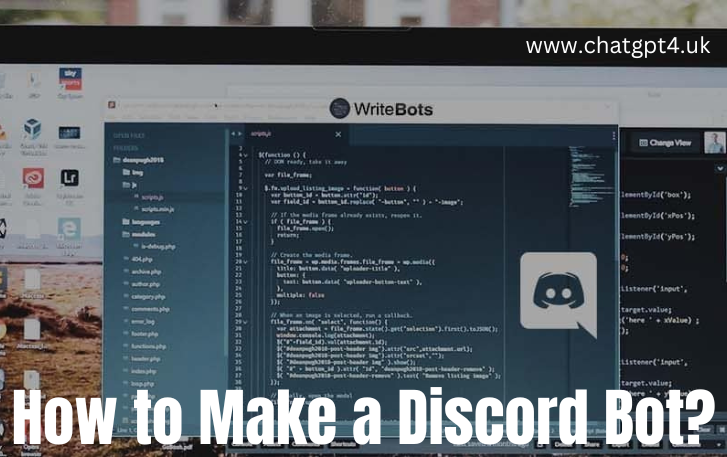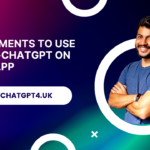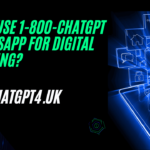How to Make a Discord Bot? Discord, a popular communication platform among gamers and communities, allows users to create and customize their own bots. These bots can automate various tasks, moderate channels, provide information, and enhance the overall Discord experience.
If you’re interested in building your own Discord bot, this step-by-step guide will walk you through the process. By the end, you’ll have the knowledge and tools to create a functional bot tailored to your specific needs.
Planning and Preparation
- Define the Bot’s Purpose: Before diving into the development process, clearly define the purpose of your Discord bot. Determine what functionality you want it to have and how it will benefit your server or community.
- Choose a Programming Language: Discord bots can be built using various programming languages, including JavaScript, Python, and Java. Select a language you’re familiar with or eager to learn.
Setting Up the Development Environment
- Install Node.js (for JavaScript-based bots) or Python (for Python-based bots): These programming languages are commonly used for Discord bot development.
- Install Code Editor: Choose a code editor such as Visual Studio Code, Atom, or Sublime Text to write your bot’s code.
- Create a Discord Bot Application: Visit the Discord Developer Portal, create a new application, and generate a bot token. This token will be used to authenticate your bot and connect it to Discord servers.
Coding the Discord Bot
- Set Up the Project: Create a new folder for your bot, initialize it as a project, and install the necessary dependencies.
- Establish a Connection: Use the bot token to connect your bot to Discord using the Discord API library for your chosen programming language.
- Responding to Events: Implement event handlers to respond to specific events such as when a message is received, a user joins or leaves a server, or the bot is mentioned.
- Implement Commands: Create custom commands that your bot will recognize and execute when triggered by users.
- Add Functionality: Enhance your bot’s capabilities by integrating features like music playback, moderation commands, or API requests to fetch data.
- Error Handling: Implement error handling to gracefully handle exceptions and prevent your bot from crashing.
Deploying and Hosting the Bot
- Choose a Hosting Provider: Select a hosting provider that supports your chosen programming language. Popular options include Hostinger, Heroku, Amazon Web Services (AWS), or a virtual private server (VPS).
- Configure Deployment: Set up deployment configuration files, such as a Procfile for Heroku, to specify the entry point of your bot’s code.
- Deploy the Bot: Follow the hosting provider’s documentation to deploy your bot to a live server.
- Bot Permissions: Configure the necessary permissions for your bot to function properly, such as reading and sending messages, managing roles, or kicking users.
Testing and Debugging
- Test Locally: Run your bot locally and test its functionality within a controlled environment to identify and fix any issues.
- Invite the Bot to a Test Server: Create a separate server or use an existing one to invite your bot for testing. This allows you to observe its behavior in a real Discord environment.
- Debugging: Utilize debugging tools and logs to identify and resolve any errors or unexpected behavior your bot may exhibit.
Refining and Updating
- Gather Feedback: Invite users to test your bot and provide feedback. Use this feedback to refine and improve your bot’s functionality.
- Regular Updates: Keep your bot up to date with new features, bug fixes, and security patches. Monitor Discord API updates and make necessary updates to ensure your bot remains compatible and functional.
Adding Advanced Features
- Database Integration: Incorporate a database to store and retrieve data for your bot, such as user preferences, server settings, or persistent data.
- Web APIs and External Services: Integrate web APIs or external services to provide additional functionality, such as retrieving weather information, fetching data from a third-party API, or interacting with other platforms.
- User Interaction: Implement features that allow users to interact with your bot through buttons, menus, or reactions to provide a more engaging experience.
Implementing Bot Permissions and Security
- Permission System: Define and assign appropriate permissions to your bot to ensure it can perform its intended tasks while maintaining server security and user privacy.
- Rate Limiting: Implement rate limiting to prevent your bot from making excessive requests to Discord API endpoints and avoid being flagged as abusive.
- Token Security: Safeguard your bot’s token by avoiding sharing it publicly or committing it to public repositories. Use environment variables or configuration files to securely store your bot token.
Managing and Scaling the Bot
- Server Monitoring: Regularly monitor your bot’s performance, resource usage, and server logs to identify any potential issues or bottlenecks. Use tools like Datadog or New Relic to gain insights into your bot’s behavior.
- Scaling Considerations: As your bot gains popularity and serves a larger user base, you may need to consider scaling your infrastructure. This can involve deploying multiple instances of your bot or utilizing load balancers to distribute the workload.
- Error Reporting and Logging: Implement error reporting and logging mechanisms to capture and track errors that occur during runtime. This helps you identify and fix issues promptly.
Bot Documentation and Support
- Documentation: Create comprehensive documentation for your bot, including installation instructions, command references, and troubleshooting guides. This makes it easier for users to understand and utilize your bot effectively.
- User Support: Set up channels or forums where users can seek assistance, ask questions, or report issues related to your bot. Provide timely and helpful responses to ensure a positive user experience.
Community Engagement and Updates
- Bot Updates and Changelogs: Regularly release updates for your bot, adding new features, fixing bugs, and addressing user feedback. Maintain a changelog to keep users informed about the changes and improvements made.
- Community Engagement: Actively engage with your bot’s user community by organizing events, seeking feedback, and fostering a sense of belonging. This helps create a vibrant and supportive community around your bot.
Following Discord Bot Guidelines and Terms of Service
- Discord Bot Guidelines: Familiarize yourself with Discord’s bot guidelines to ensure your bot complies with the platform’s rules and policies. This includes guidelines on user privacy, bot behavior, and proper usage of the API.
- Terms of Service: Understand and adhere to Discord’s Terms of Service to avoid any violations that may lead to your bot being disabled or your account being banned.
Conclusion
By incorporating these additional points into your Discord bot development journey, you can effectively manage, scale, and support your bot while maintaining compliance with Discord’s guidelines and terms.
Remember to monitor and optimize your bot’s performance, engage with your user community, and provide comprehensive documentation and support. With dedication and continuous improvement, your Discord bot can become a valuable asset that enhances communication and engagement within your Discord server or community.
FAQs
Q1: Do I need to have coding experience to make a Discord bot?
A1: While coding experience is beneficial, it is not mandatory. There are resources available that can help beginners get started with Discord bot development using user-friendly frameworks and libraries.
Q2: Can I make a Discord bot using any programming language?
A2: Discord bot development is possible with multiple programming languages, including JavaScript, Python, and Java. Choose a language that you are comfortable with or interested in learning.
Q3: How can I host my Discord bot?
A3: There are several hosting options available, including platforms like Heroku, and AWS, or utilizing a virtual private server (VPS). Choose a hosting provider that supports your chosen programming language and offers the required resources for your bot.
Q4: Are there any limitations or restrictions on Discord bot development?
A4: Discord has guidelines and terms of service that developers must adhere to. These guidelines cover topics such as bot behavior, user privacy, and proper API usage. Ensure that your bot complies with these guidelines to avoid potential issues.
Q5: Can I monetize my Discord bot?
A5: Discord prohibits monetizing bots directly through their platform. However, you can explore alternative ways to generate revenue, such as offering premium features or creating additional services around your bot.
Q6: How can I add my bot to a Discord server?
A6: To add your bot to a Discord server, you need to generate an invite link with the necessary permissions. This can be done through the Discord Developer Portal or using a library-specific method.
Q7: Can I update my bot’s code without restarting it?
A7: Yes, you can implement a hot-reloading mechanism in your bot’s code, allowing you to make changes and see them take effect without restarting the bot. Libraries like nodemon or flask-auto-reload can assist with this.
Q8: How can I ensure my bot’s security?
A8: To enhance your bot’s security, avoid sharing your bot token publicly or committing it to public repositories. Use environment variables or configuration files to securely store sensitive information. Additionally, follow best practices for handling user data and API requests.
Q9: Can I create multiple bots for different purposes?
A9: Yes, you can create multiple bots for different purposes. Each bot will have its own token and functionality, allowing you to cater to various needs within your Discord server or community.
Q10: How can I get support or assistance with Discord bot development?
A10: There are various communities, forums, and documentation available to seek support and assistance with Discord bot development. Discord’s official developer community and platforms like Stack Overflow can be valuable resources for troubleshooting and learning.







